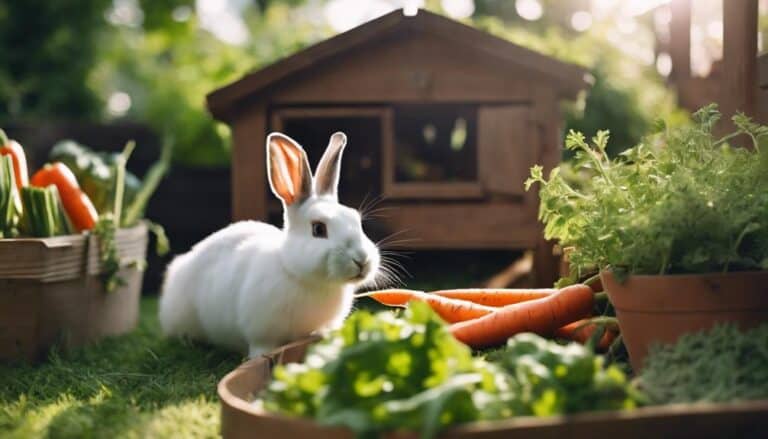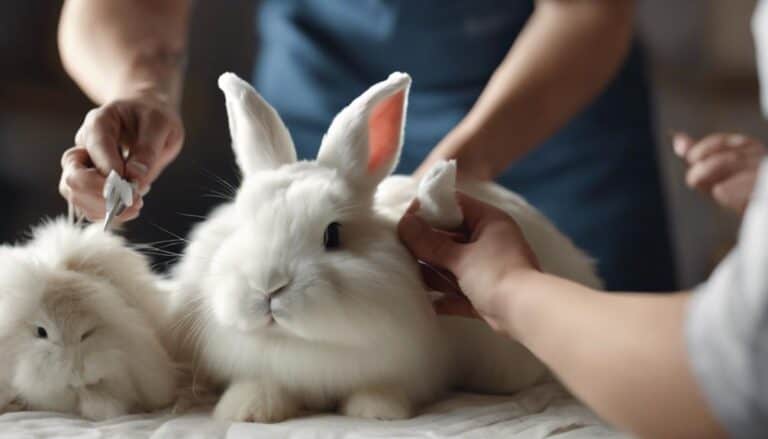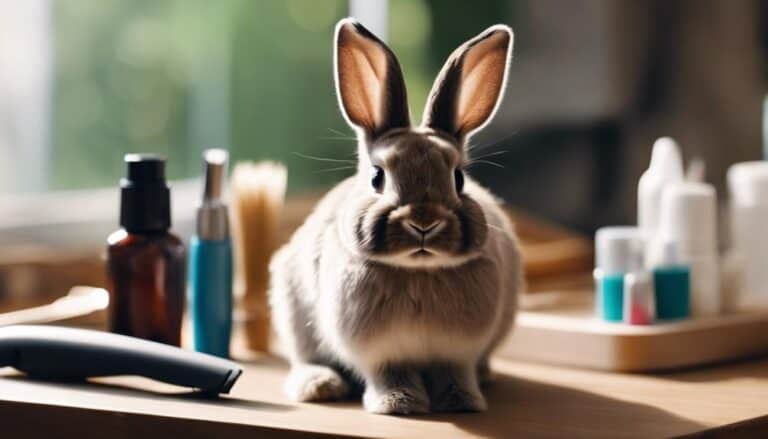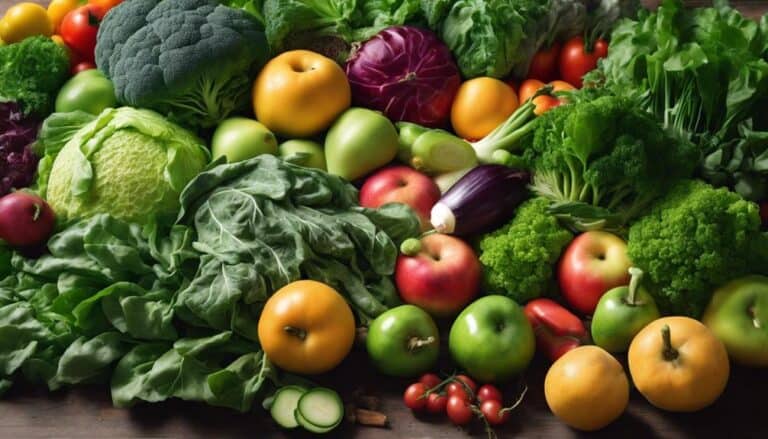Bunnies can be baffling creatures when it comes to their delicate digestive systems. But have you ever wondered why these fluffy friends fall victim to gastrointestinal stasis?
Understanding the ins and outs of this ailment is necessary for every bunny owner. By unraveling the mysteries behind why bunnies experience GI stasis and discovering effective prevention methods, you can safeguard your furry companion's well-being and guarantee a hoppy and healthy life.
So, let's explore the secrets to keeping your bunny's tummy trouble-free.
Contents
Key Takeaways
- GI stasis in bunnies results from factors like low-fiber diet, dehydration, stress, and dental issues.
- Prevention involves high-fiber diet, proper hydration, stress reduction, and prompt treatment of health issues.
- Lack of exercise can worsen gastrointestinal motility problems, leading to potential blockages.
- Timely intervention through symptom monitoring and veterinary care is crucial in preventing severe complications of GI stasis.
Understanding GI Stasis in Bunnies
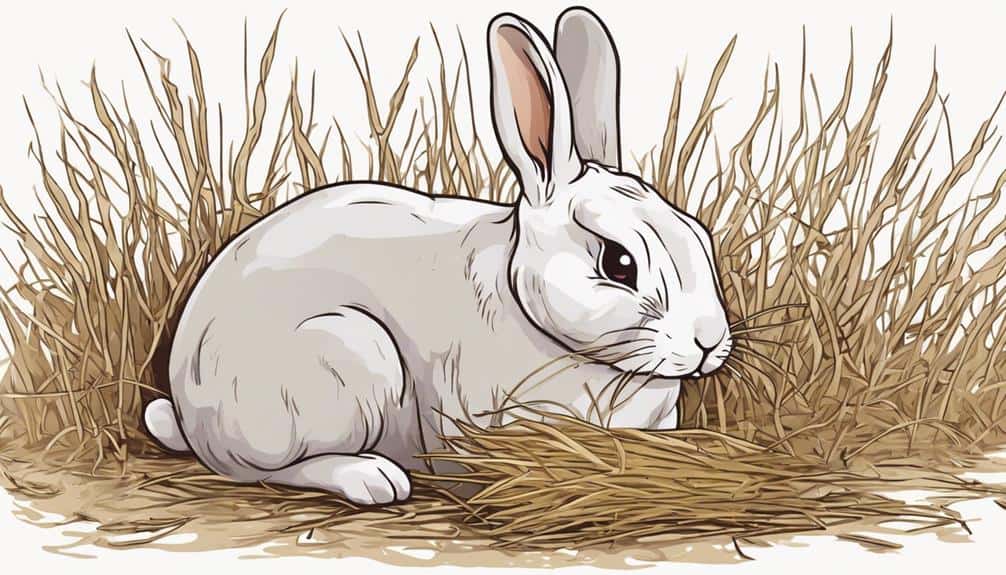
What exactly is GI stasis in bunnies and why is it a concerning condition for their health?
Gastrointestinal (GI) stasis in rabbits refers to a reduction in the movement of food and waste through the digestive tract, resulting in decreased or absent fecal output. This condition can be caused by various factors such as a diet low in fiber, stress, dehydration, dental problems, and pain.
When a bunny experiences GI stasis, it can lead to bloating, discomfort, and potentially severe complications if left untreated. The buildup of gas and ingested matter in the digestive tract can cause pain and distress to the animal, impacting its overall well-being.
Understanding the causes of GI stasis is essential for effective prevention and management. Providing a high-fiber diet, ensuring proper hydration, minimizing stressors, and addressing any health issues promptly are key steps in preventing GI stasis in bunnies. By taking proactive measures, you can help safeguard your bunny's digestive health and overall quality of life.
Recognizing Symptoms of GI Stasis
To identify potential signs of GI stasis in your bunny, pay close attention to changes in their behavior and physical condition. Rabbits suffering from gastrointestinal stasis may exhibit decreased appetite, reduced fecal output, and signs of abdominal pain. Keep an eye out for behavioral changes such as a hunched posture, teeth grinding, bloating, diarrhea, and decreased activity levels.
Monitoring your rabbit's temperature, heart rate, and stool consistency regularly can help in recognizing symptoms early. If you notice any of these signs, it's important to seek immediate veterinary attention. Prompt intervention is essential to prevent serious complications associated with GI stasis.
Common Causes of GI Stasis
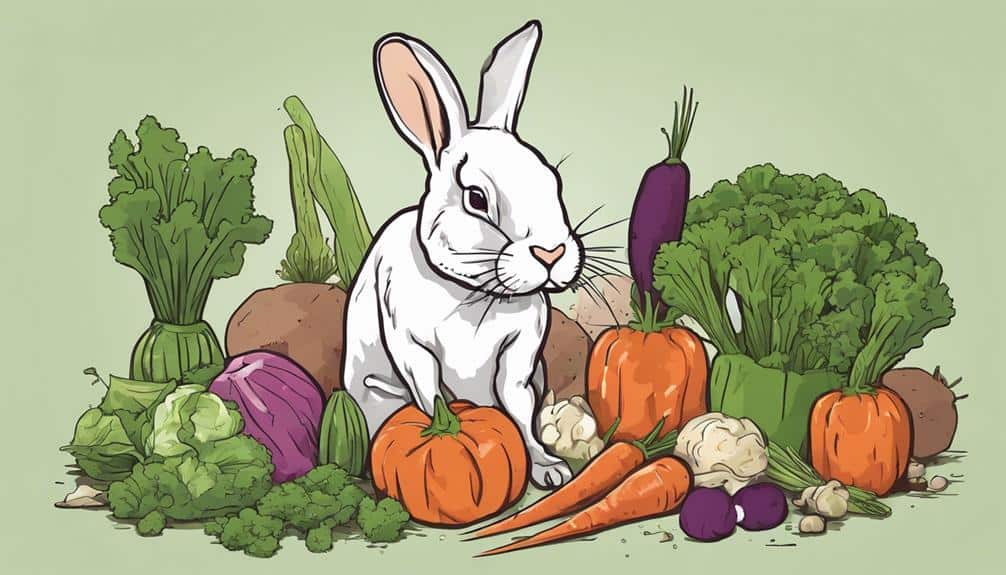
A poor diet lacking in fiber and dehydration are common culprits behind GI stasis in rabbits. Stress and anorexia from underlying medical issues can also contribute to this condition.
Additionally, a sedentary lifestyle with lack of exercise may exacerbate gastrointestinal motility issues leading to stasis in bunnies.
Diet and Hydration
Insufficient fiber intake and dehydration are significant contributors to the development of GI stasis in rabbits. A diet lacking in high-fiber hay can disrupt the normal functioning of a rabbit's gastrointestinal system, leading to stasis.
Additionally, inadequate hydration can result in dehydration, impacting gut motility and digestion, further increasing the risk of GI stasis. Offering a vital amount of fresh water is critical to prevent such complications.
Foods high in carbohydrates, such as pellets and vegetables, can also upset the delicate balance of the rabbit's stomach, potentially causing GI stasis. Ensuring your rabbit has a diet rich in high-fiber hay and maintaining adequate hydration are essential steps in safeguarding against GI stasis in these delicate animals.
Lack of Exercise
Inadequate physical activity can greatly impact the gastrointestinal health of rabbits, potentially leading to the development of GI stasis. Lack of exercise affects rabbits' digestive tract in various ways:
- Decreased gut motility increases the risk of GI stasis.
- Limited physical activity can result in blockages in the digestive system.
- Exercise promotes normal peristalsis important for healthy digestion.
- Inactive rabbits may suffer from reduced cecum function, leading to gut issues.
- Providing opportunities for exercise, such as supervised playtime and space to hop and run, is essential in preventing GI stasis.
Regular physical activity is necessary for maintaining a healthy digestive system in rabbits.
Proper Diet for GI Stasis Prevention
To prevent GI stasis in bunnies, ensuring a diet rich in fiber, particularly grass hay, is essential. Fiber plays a significant role in maintaining proper gut motility, preventing blockages that can lead to stasis. Limiting the intake of pellets and sugary treats is important as well, as these can disrupt the delicate balance of the rabbit's digestive system. Incorporating fresh vegetables into your rabbit's diet in moderation can provide essential nutrients and contribute to overall digestive health.
In addition to fiber intake, dehydration is a significant factor in GI stasis. It's crucial to ensure your rabbit has constant access to fresh, clean water to aid in digestion and prevent complications. Monitoring your rabbit's weight regularly and adjusting their diet accordingly can help prevent obesity, which is linked to GI stasis.
Minimizing Stress and Pain
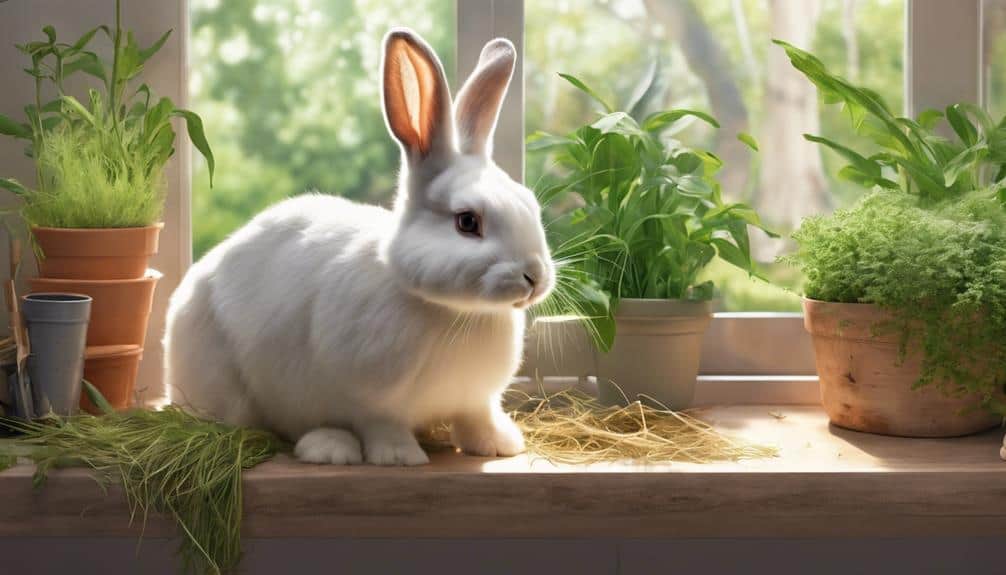
Minimizing stress and pain in rabbits is crucial for preventing GI stasis episodes and maintaining their overall health and well-being. To guarantee your bunny stays healthy and happy, consider the following:
- Create a Stress-Free Environment: Reduce loud noises, sudden movements, and introduce changes gradually to minimize stress.
- Handle Gently: Approach your rabbit calmly and handle them gently to avoid causing unnecessary stress.
- Monitor Dental Health: Regularly check your rabbit's teeth for signs of dental disease, which can be painful and affect their appetite.
- Address Urinary Tract Issues Promptly: Any urinary tract problems should be addressed promptly as they can lead to pain and decreased appetite.
- Regular Veterinary Check-Ups: Schedule routine check-ups with a rabbit-savvy vet to detect and address any sources of pain or discomfort early on.
Veterinary Care for GI Stasis Prevention
Regular veterinary check-ups play an important role in preventing GI stasis in rabbits by identifying and addressing potential health issues early on. Rabbits with GI stasis may stop eating, leading to a potentially dangerous condition. A veterinarian can assess the rabbit's stomach and intestines for signs of excessive gas or abnormal motility, which can cause GI stasis.
By conducting thorough physical examinations and recommending diagnostic tests like a complete blood count, vets can detect underlying medical conditions that may contribute to GI stasis. Additionally, veterinarians can provide guidance on proper nutrition tailored to the individual rabbit's needs, helping to maintain normal intestinal function and reduce the risk of gastrointestinal issues.
Regular consultations with a vet make certain that preventive measures are in place, promoting the overall well-being of rabbits and minimizing the likelihood of GI stasis development.
Frequently Asked Questions
How Do You Prevent GI Stasis in Rabbits?
To prevent GI stasis in rabbits, make sure a proper diet with high-fiber hay, limit sugary treats, encourage exercise, maintain a grooming routine, provide mental stimulation, offer fresh water, bond with your pet, monitor weight, schedule vet check-ups for preventative care.
What Foods Cause GI Stasis in Rabbits?
Eating high carb veggies, processed pellets, sugary treats, and skipping hay can trigger GI stasis in bunnies. Your bunny's gut needs balance. Limit treats, offer hay, and focus on a varied, hay-rich diet.
Can You Reverse GI Stasis in Rabbits?
Yes, you can reverse GI stasis in rabbits through emergency treatment, home remedies, probiotic supplements, fluid therapy, critical care, medication options, monitoring progress, recovery time, all-encompassing approach tailored to the individual rabbit's needs, and preventative measures. It requires a thorough approach tailored to the individual rabbit's needs.
How Long Can a Rabbit Survive With GI Stasis?
You can expect a rabbit to survive with GI stasis for 3-5 days with proper medical care. The prognosis depends on treatment response, underlying issues, and supportive care. Monitoring progress and management strategies are vital.
Conclusion
To summarize, ensuring your bunny's health and well-being is of utmost importance to prevent GI stasis. By providing a high-fiber diet, regular check-ups, company, and exercise, you can help minimize the risk of this serious condition.
Remember, a happy and healthy bunny is a bunny free from GI stasis! So, don't delay in taking proactive steps to keep your furry friend thriving.


